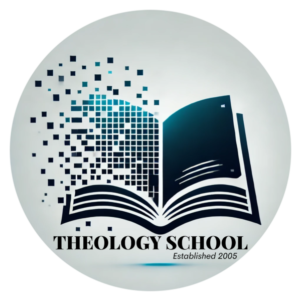Perhaps the most peculiar of all of the Christological heresies was that of Eutychianism. This teaching denied the distinction between the divine and the human nature and held that the two were fused to form a third which was neither divine nor human. Christ was thus supposed to be neither God nor man, but possessed of a nature somewhere between the two. But since the divine nature was the greater it followed that for all practical purposes the human was really absorbed into the divine, but with the effect that the divine was also somewhat changed.
Eutyches held that two natures implied two persons. Hence he acknowledged in Christ but one life, one intelligence, and one will. Since Eutychianism denied the human element in Christ it denied the real union of God and man and therefore the possibility of an atonement through the human nature. This blending or fusing of the two natures was, of course, the precise opposite of the Nestorian heresy which had so divided the natures as to give a double personality.
Eutychianism was too unstable to gain a large following and it was condemned by the Council of Chalcedon in the year 451.
In conclusion, then, we would point out that the orthodox doctrine of the person of Christ has been the common heritage of the Church since the Council of Chalcedon, 451 A. D. It is not a doctrine that was easily arrived at, but one that was worked out only after long and patient study of the Scriptures and after lively debate in the church councils. Numerous other solutions were tried and found wanting. But in this the Church found rest and has continued to rest until our own day. In it alone, it is safe to say, do the Scripture representations of Christ as God and also as man find harmonious adjustment.
\”To the onlooker from this distance of time,\” says Dr. Warfield, \”the main line of the progress of the debate takes on an odd appearance of a steady zigzag advance. Arising out of the embers of the Arian controversy, there is first vigorously asserted, over against the reduction of our Lord to the dimensions of a creature, the pure Deity of His spiritual nature (Apollinarianism); by this there is at once provoked, in the interests of the integrity of our Lord\’s humanity, the equally vigorous assertion of the completeness of His human nature as the bearer of His Deity (Nestorianism); this in turn provokes, in the interest of the oneness of His person, an equally vigorous assertion of the conjunction of these two natures in a single individuum (Eutychianism): from all of which there gradually emerges at last, by a series of corrections, the balanced statement of Chalcedon, recognizing at once in its \’without confusion, without conversion, eternally and inseparably\’ the union in the person of Christ of a complete Deity and a complete humanity, constituting a single person without prejudice to the continued integrity of either nature.
The pendulum of thought had swung back and forth in ever-decreasing arcs, until at last it found rest along the line of action of the fundamental force. Out of the continuous controversy of a century there issued a balanced statement in which all the elements of the biblical representation were taken up and combined. Work so done is done for all time; and it is capable of ever-repeated demonstration that in the developed doctrine of the Two Natures and in it alone, all the biblical data are brought together in a harmonious statement, in which each receives full recognition, and out of which each may derive its sympathetic exposition. This key unlocks the treasures of the biblical instruction on the person of Christ as none other can, and enables the reader as he currently scans the sacred pages to take up their declarations as they meet him, one after the other, into an intelligently consistent conception of his Lord.\” (Christology and Criticism, p. 264).
The foregoing survey of the erroneous views concerning the person of Christ would seem to show that history has exhausted the possibilities of heresy and that future denials of the doctrine must be, in essence, only variations of views which have already been advanced and refuted. For, as Dr. A. H. Strong says, \”All controversies with regard to the person of Christ must, of necessity, hinge on one of the three points: first, the reality of the two natures; secondly, the integrity of the two natures; thirdly, the union of the two natures in one person. Of these points, Ebionism and Docetism deny the reality of the two natures; Arianism and Apollinarianism deny their integrity; while Nestorianism and Eutychianism deny their proper union.
In opposition to all these errors, the orthodox doctrine held its ground and maintains it to this day.\” (Systematic Theology, p. 672). And there is much truth in the comment of Dr. A. P. Peabody made in another connection to the effect that \”The canon of infidelity was closed almost as soon as that of the Scriptures,\”—modern unbelievers having done little more than repeat the long exploded heresies of former centuries. From its earliest origin the Church has believed in both the Deity and the humanity of Christ. Only in the outlawed and comparatively insignificant Ebionite and Docetic sects do we find a belief in a one- natured Christ. Not until the rise of Socinianism in the sixteenth century do we find an important defection from the Church doctrine; and that was in substance a recrudescence of the ancient Ebionite heresy which denied the Deity of Christ. Present day Unitarianism and Modernism, which are essentially denials of the supernatural in religion, trace their origin back to that same movement.

